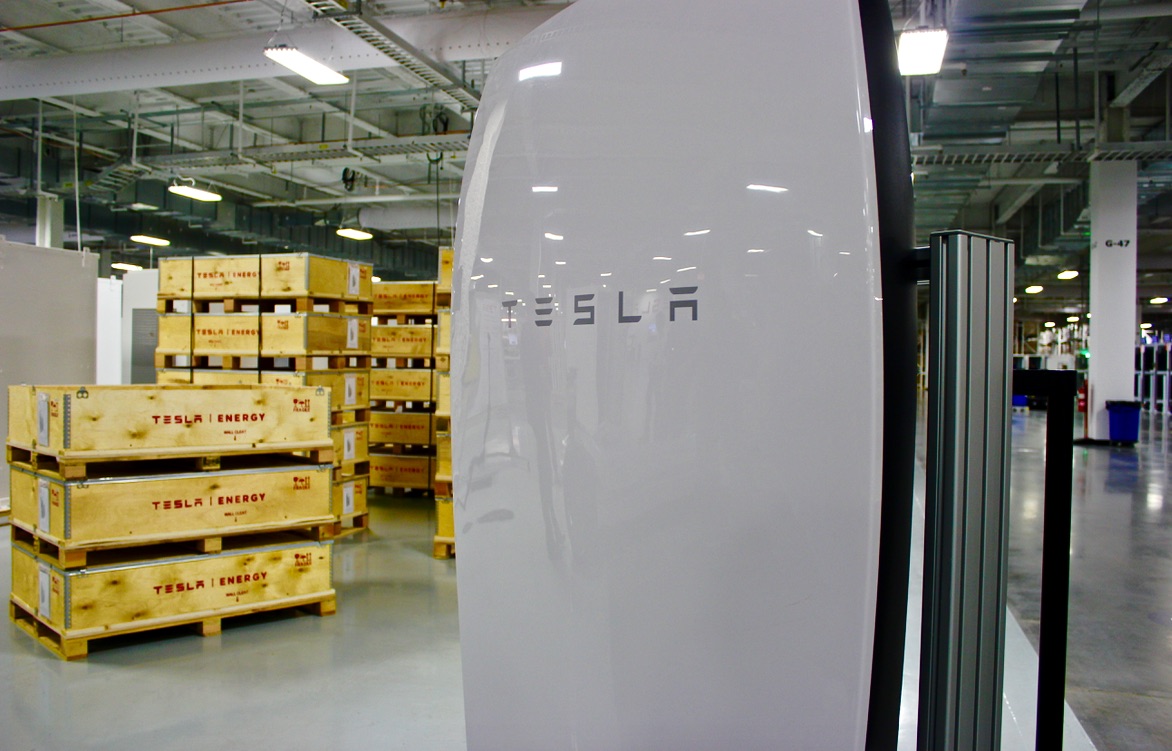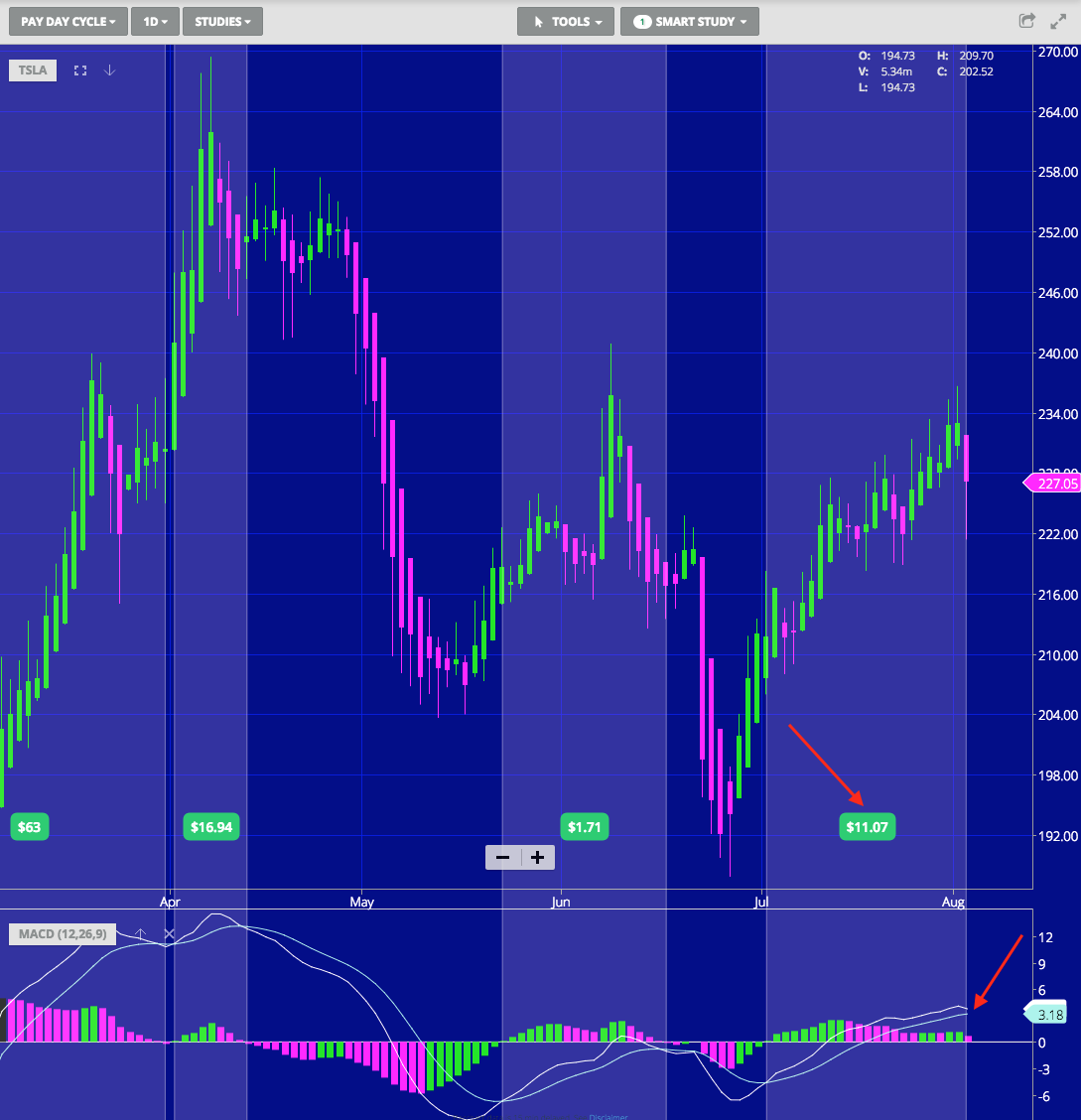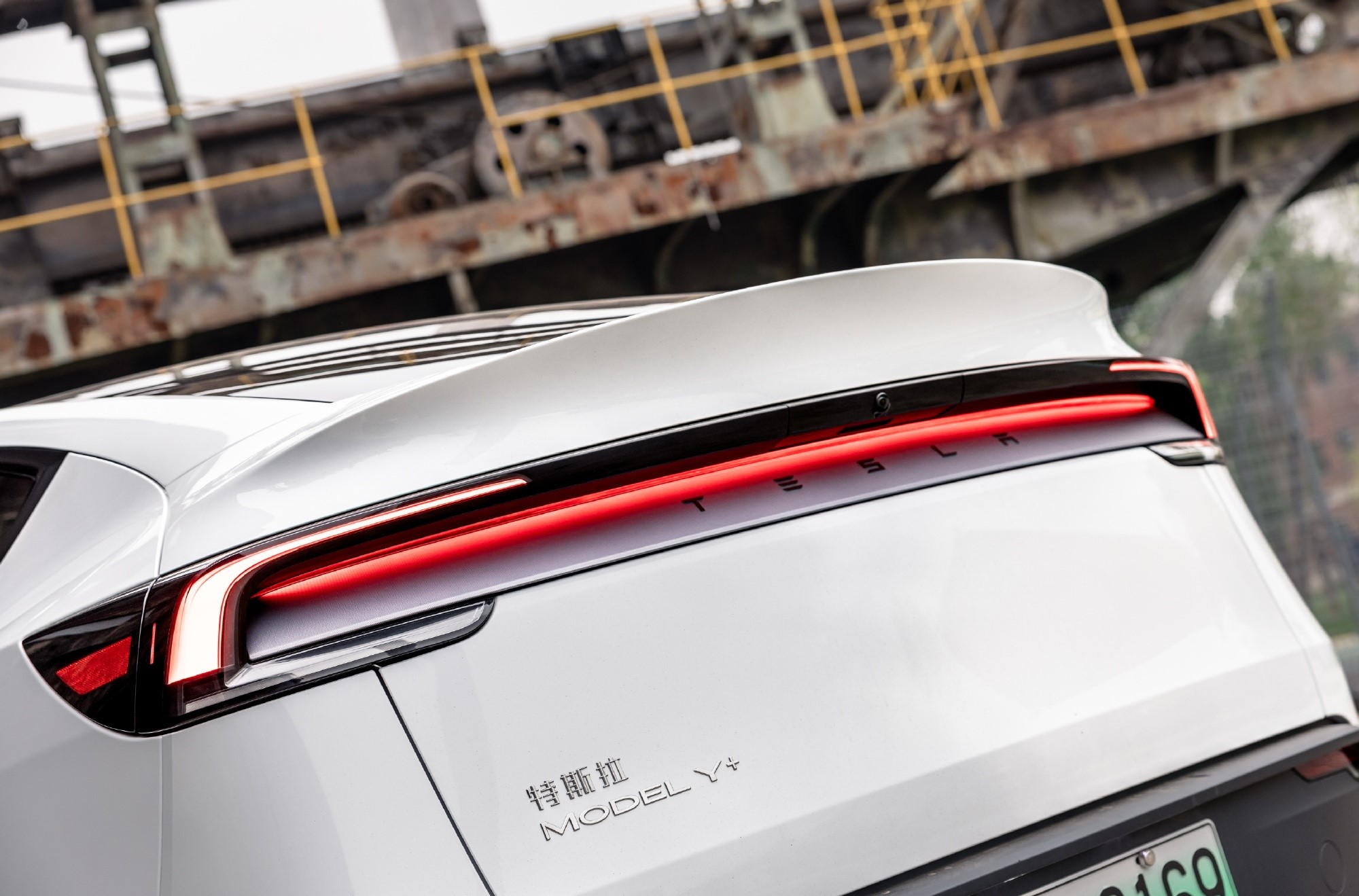Investor's Corner
Tesla – SolarCity merger: the devil is in the details

On Monday August 1st, Tesla announced that it had reached a definitive agreement to acquire SolarCity. Tesla provided investors with an Investor Presentation slide set, and a 180 pages long Form 8-K filing.
Investor Presentation
In the slide presentation titled Tesla to acquire SolarCity, the company provided details for the proposed transaction.
Tesla would acquire SolarCity in an all-stock transaction valued at $2.6 billion. SolarCity shareholders will receive 0.110 shares of Tesla stock for each share of SolarCity valued at $25.37 per share. The transaction is expected to close in Q4 2016 and subject to the approval by a majority of disinterested shareholders at both SolarCity and Tesla, to be voted upon at each respective shareholder meeting.
The Tesla SolarCity “strategic” combination would:
- Accelerate the transition to sustainable energy
- Create world’s only integrated sustainable energy company
- Drive products development and innovation
- Catalyze solar energy adoption
- [Provide] substantial cost efficiencies.
The presentation stated that SolarCity provides best-in-class rooftop solar installation costs of $1.92 per watt as of 4Q15, and is America’s #1 vertically integrated provider of residential and commercial solar, with a 35% share of the residential market and 14% share of the commercial market in 2015. Tesla is the world’s fastest growing car company, with an 18% market share of the “large Luxury sedans” in 2015 with its Model S.
The combined company would leverage Tesla’s design and manufacturing expertise:
- Speed development of beautiful, differentiated and technologically superior products
- Improve solar value proposition by integrating storage, reducing system cost and improving reliability
- Fully integrate product suite for a seamless user experience, delivering an improved, lower-cost product for customers
- Develop products for residential, commercial and grid-scale applications
- Take advantage of SolarCity’s industry-leading project finance capabilities
One of the major points of the slide presentation is that the combined companies would provide “substantial cost efficiencies”, with $150 million of direct cost synergies expected to be achieved in the first full year after closing the transaction.
The cost synergies would be driven by sales and marketing efficiencies, and corporate and overhead savings. The value proposition is improved by lowering hardware costs, reducing installation and service costs, improving manufacturing efficiency, reducing customer acquisition costs, and cutting capital costs.
Form 8-K Filing
The very long document filing includes the usual boilerplate for merger transactions, but also reveals quite a few interesting tidbits, buried into the document. These are quotes from the document.
Stockholders of SolarCity will be asked to vote on the adoption and approval of the Merger Agreement and the Merger, and stockholders of Tesla will be asked to vote on the approval of the Merger and the Share Issuance, at special meetings of the stockholders of SolarCity and Tesla, respectively, that will be held on dates to be announced.
“The Merger Agreement and the Merger be adopted and approved by stockholders of SolarCity, including by the holders of a majority of the total votes of shares of SolarCity common stock […] that are not owned by Mr. Elon Musk and the other directors. other than Nancy E. Pfund and Donald R. Kendall, Jr.”
Similarly, “the Merger and the Share Issuance be approved by the stockholders of Tesla, including by the holders of a majority of the total votes of shares of Tesla common stock […] that are not owned by Mr. Elon Musk and the other directors and the named executive officers of SolarCity and certain of their affiliates.”
This means that the approval will likely rely on mutual fund managers and banks that hold large chunks of both Tesla and SolarCity stock.
As part of the agreement, SolarCity has a 45-day period known as a “go-shop”, which runs through September 14, 2016. This means that SolarCity is allowed to solicit alternative proposals during that time.
The all-stock transaction, with an equity value of $2.6 billion, is based on the 5-day volume-weighted average price of Tesla shares as of July 29, 2016. Under the agreement, SolarCity stockholders will receive 0.110 Tesla common shares per SolarCity share, valuing SolarCity common stock at $25.37 per share based on the 5-day volume weighted average price of Tesla shares as of July 29, 2016.
The “Excluded Company Parties”, i.e. the directors and named executive officers other than Nancy E. Pfund and Donald R. Kendall, Jr., that will not be able to vote at the Company Stockholders Meeting include Lyndon R. Rive, Peter J. Rive, Tanguy V. Serra, Hayden D. Barnard, Seth R. Weissman, Elon Musk, John H.N. Fisher, Antonio Gracias and Jeffrey B. Straubel.
While most stock options equity awards of each company will be automatically converted into stock options of the “merged” company, the stock options set forth in a “Company disclosure letter” shall be cancelled for no consideration. It turns out that these options are the ones that were granted by SolarCity to Lyndon and Peter Rive, the CEO and CTO of SolarCity. These options amounted to about $128 million, and would have been earned over a 10 year period, based on achieving a set of goals of SolarCity stock price and operational results. For some unknown treason, Elon Musk’s cousins will get the shaft in the merger transaction related to their stock options.
But do not feel too bad for the cousins. According to a research report from Reuters, that analyzed the results of the merger, “three of Musk’s relatives, including brother Kimbal Musk and cousins Lyndon Rive and Peter Rive, will own a combined stake of 0.5 percent in Tesla. Kimbal Musk is a director of Tesla.”
According to Reuters “Elon Musk and key institutional investors will probably tighten their control over electric car maker Tesla Motors Inc after it acquires sister company SolarCity Inc.” “The largest institutional shareholder, Fidelity Management and Research, will see its stake grow from 12.2 percent to 13.4 percent. Two Fidelity-managed funds, Fidelity Contrafund and Fidelity OTC, together will control another 7.3 percent, up from 6.5 percent.”
Musk will remain the largest individual shareholder, boosting his stake from 23.2 percent to 25.0 percent according to Reuters.
Note that Fidelity has already come out in favor of the merger.
“Musk, eight major institutional investors and the two Fidelity funds control 45.7 percent of Tesla. After the merger, the same group’s combined stake will rise to 49.0 percent.” “Other major institutional shareholders include Scottish investment manager Bailie Gifford & Co, which will maintain an 8.9 percent stake in the combined companies; T. Rowe Price Associates, 5.5 percent, and Vanguard Group, 3.6 percent. Big banks, including several Tesla lenders, also will maintain significant stakes after the merger: Bank of Montreal, 4.1 percent; Morgan Stanley, 3.0 percent; Goldman Sachs, 2.2 percent, and J.P. Morgan Chase, 1.0 percent.”
What this all means is that individual investors will have no say in the approval of the merger, and only a few more institutional investors are needed, besides Fidelity, to approve the merger. The only thing that could derail the merger is a third party bid for SolarCity, during the go-shop period. Given how debt ridden is SolarCity, the chance of of such a bid are fairly remote.
Market Reaction
The initial market reaction to the details of the merger agreement was mixed, but eventually turned negative. On Monday the stock reached $236, but closed at $229. On Tuesday the stock initially sold off even more to $221, closing the session at $227.
Looking at the chart, The MACD has started pinching, indicating a possible end of the MACD-run that started on July 1st. Anyone selling today would have had a nice $11 gain, over a 1-month period, a very nice return. I personally closed my July 1st call option trade (I was long Sept 230 calls) when TSLA reached $236 on Monday. I was planning to close my trade before the Quarterly report is released on Wednesday, and the high point of Monday made it a perfect exit. Notice that I never hold options or stock before a quarterly report, especially for a volatile stock as TSLA, as the post report swings are so wide that one can easily lose their shirt in the the span of a few hours.

Source: Wall Street I/O
Investor's Corner
Tesla could save $2.5B by replacing 10% of staff with Optimus: Morgan Stanley
Jonas assigned each robot a net present value (NPV) of $200,000.

Tesla’s (NASDAQ:TSLA) near-term outlook may be clouded by political controversies and regulatory headwinds, but Morgan Stanley analyst Adam Jonas sees a glimmer of opportunity for the electric vehicle maker.
In a new note, the Morgan Stanley analyst estimated that Tesla could save $2.5 billion by replacing just 10% of its workforce with its Optimus robots, assigning each robot a net present value (NPV) of $200,000.
Morgan Stanley highlights Optimus’ savings potential
Jonas highlighted the potential savings on Tesla’s workforce of 125,665 employees in his note, suggesting that the utilization of Optimus robots could significantly reduce labor costs. The analyst’s note arrived shortly after Tesla reported Q2 2025 deliveries of 384,122 vehicles, which came close to Morgan Stanley’s estimate and slightly under the consensus of 385,086.
“Tesla has 125,665 employees worldwide (year-end 2024). On our calculations, a 10% substitution to humanoid at approximately ($200k NPV/humanoid) could be worth approximately $2.5bn,” Jonas wrote, as noted by Street Insider.
Jonas also issued some caution on Tesla Energy, whose battery storage deployments were flat year over year at 9.6 GWh. Morgan Stanley had expected Tesla Energy to post battery storage deployments of 14 GWh in the second quarter.
Musk’s political ambitions
The backdrop to Jonas’ note included Elon Musk’s involvement in U.S. politics. The Tesla CEO recently floated the idea of launching a new political party, following a poll on X that showed support for the idea. Though a widely circulated FEC filing was labeled false by Musk, the CEO does seem intent on establishing a third political party in the United States.
Jonas cautioned that Musk’s political efforts could divert attention and resources from Tesla’s core operations, adding near-term pressure on TSLA stock. “We believe investors should be prepared for further devotion of resources (financial, time/attention) in the direction of Mr. Musk’s political priorities which may add further near-term pressure to TSLA shares,” Jonas stated.
Investor's Corner
Two Tesla bulls share differing insights on Elon Musk, the Board, and politics
Two noted Tesla bulls have shared differing views on the recent activities of CEO Elon Musk and the company’s leadership.

Two noted Tesla (NASDAQ:TSLA) bulls have shared differing views on the recent activities of CEO Elon Musk and the company’s leadership.
While Wedbush analyst Dan Ives called on Tesla’s board to take concrete steps to ensure Musk remains focused on the EV maker, longtime Tesla supporter Cathie Wood of Ark Invest reaffirmed her confidence in the CEO and the company’s leadership.
Ives warns of distraction risk amid crucial growth phase
In a recent note, Ives stated that Tesla is at a critical point in its history, as the company is transitioning from an EV maker towards an entity that is more focused on autonomous driving and robotics. He then noted that the Board of Directors should “act now” and establish formal boundaries around Musk’s political activities, which could be a headwind on TSLA stock.
Ives laid out a three-point plan that he believes could ensure that the electric vehicle maker is led with proper leadership until the end of the decade. First off, the analyst noted that a new “incentive-driven pay package for Musk as CEO that increases his ownership of Tesla up to ~25% voting power” is necessary. He also stated that the Board should establish clear guidelines for how much time Musk must devote to Tesla operations in order to receive his compensation, and a dedicated oversight committee must be formed to monitor the CEO’s political activities.
Ives, however, highlighted that Tesla should move forward with Musk at its helm. “We urge the Board to act now and move the Tesla story forward with Musk as CEO,” he wrote, reiterating its Outperform rating on Tesla stock and $500 per share price target.
Tesla CEO Elon Musk has responded to Ives’ suggestions with a brief comment on X. “Shut up, Dan,” Musk wrote.
Cathie Wood reiterates trust in Musk and Tesla board
Meanwhile, Ark Investment Management founder Cathie Wood expressed little concern over Musk’s latest controversies. In an interview with Bloomberg Television, Wood said, “We do trust the board and the board’s instincts here and we stay out of politics.” She also noted that Ark has navigated Musk-related headlines since it first invested in Tesla.
Wood also pointed to Musk’s recent move to oversee Tesla’s sales operations in the U.S. and Europe as evidence of his renewed focus in the electric vehicle maker. “When he puts his mind on something, he usually gets the job done,” she said. “So I think he’s much less distracted now than he was, let’s say, in the White House 24/7,” she said.
TSLA stock is down roughly 25% year-to-date but has gained about 19% over the past 12 months, as noted in a StocksTwits report.
Investor's Corner
Cantor Fitzgerald maintains Tesla (TSLA) ‘Overweight’ rating amid Q2 2025 deliveries
Cantor Fitzgerald is holding firm on its bullish stance for the electric vehicle maker.

Cantor Fitzgerald is holding firm on its bullish stance for Tesla (NASDAQ: TSLA), reiterating its “Overweight” rating and $355 price target amidst the company’s release of its Q2 2025 vehicle delivery and production report.
Tesla delivered 384,122 vehicles in Q2 2025, falling below last year’s Q2 figure of 443,956 units. Despite softer demand in some countries in Europe and ongoing controversies surrounding CEO Elon Musk, the firm maintained its view that Tesla is a long-term growth story in the EV sector.
Tesla’s Q2 results
Among the 384,122 vehicles that Tesla delivered in the second quarter, 373,728 were Model 3 and Model Y. The remaining 10,394 units were attributed to the Model S, Model X, and Cybertruck. Production was largely flat year-over-year at 410,244 units.
In the energy division, Tesla deployed 9.6 GWh of energy storage in Q2, which was above last year’s 9.4 GWh. Overall, Tesla continues to hold a strong position with $95.7 billion in trailing twelve-month revenue and a 17.7% gross margin, as noted in a report from Investing.com.
Tesla’s stock is still volatile
Tesla’s market cap fell to $941 billion on Monday amid volatility that was likely caused in no small part by CEO Elon Musk’s political posts on X over the weekend. Musk has announced that he is forming the America Party to serve as a third option for voters in the United States, a decision that has earned the ire of U.S. President Donald Trump.
Despite Musk’s controversial nature, some analysts remain bullish on TSLA stock. Apart from Cantor Fitzgerald, Canaccord Genuity also reiterated its “Buy” rating on Tesla shares, with the firm highlighting the company’s positive Q2 vehicle deliveries, which exceeded its expectations by 24,000 units. Cannacord also noted that Tesla remains strong in several markets despite its year-over-year decline in deliveries.
-

 Elon Musk2 weeks ago
Elon Musk2 weeks agoTesla investors will be shocked by Jim Cramer’s latest assessment
-

 News2 days ago
News2 days agoTesla debuts hands-free Grok AI with update 2025.26: What you need to know
-

 Elon Musk4 days ago
Elon Musk4 days agoxAI launches Grok 4 with new $300/month SuperGrok Heavy subscription
-

 Elon Musk6 days ago
Elon Musk6 days agoElon Musk confirms Grok 4 launch on July 9 with livestream event
-

 News1 week ago
News1 week agoTesla Model 3 ranks as the safest new car in Europe for 2025, per Euro NCAP tests
-

 Elon Musk2 weeks ago
Elon Musk2 weeks agoxAI’s Memphis data center receives air permit despite community criticism
-

 News4 days ago
News4 days agoTesla begins Robotaxi certification push in Arizona: report
-

 Elon Musk2 weeks ago
Elon Musk2 weeks agoTesla scrambles after Musk sidekick exit, CEO takes over sales














